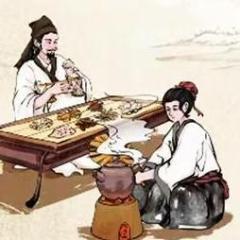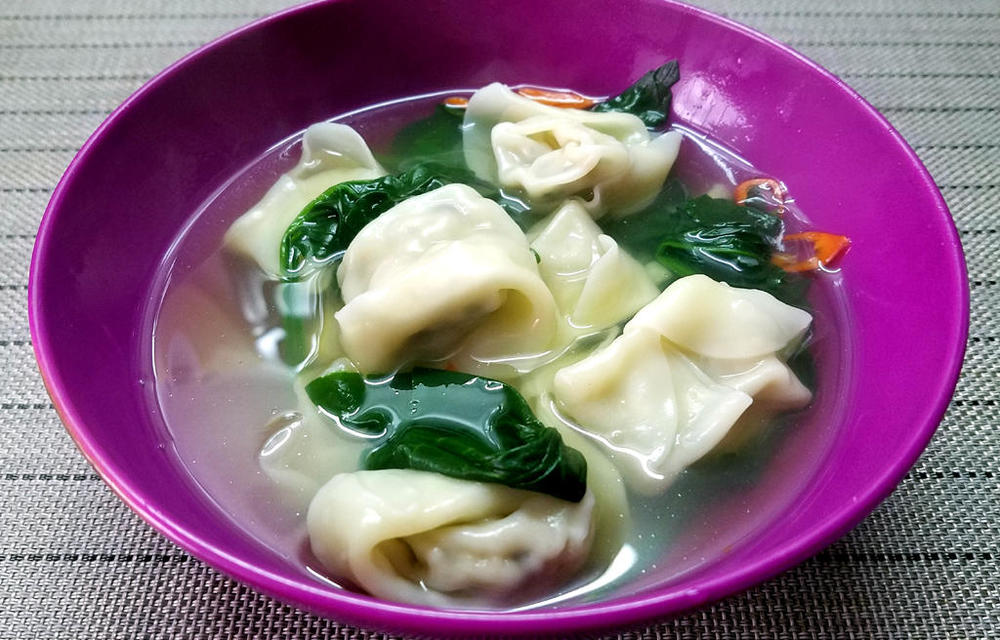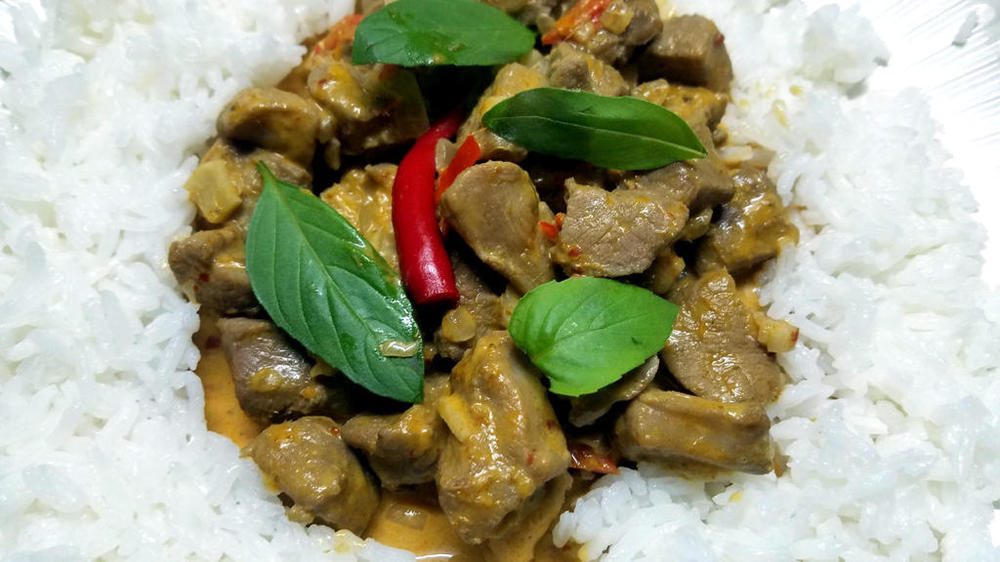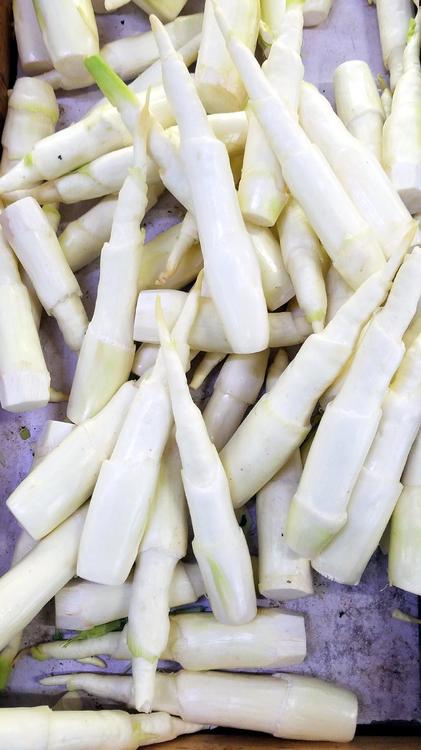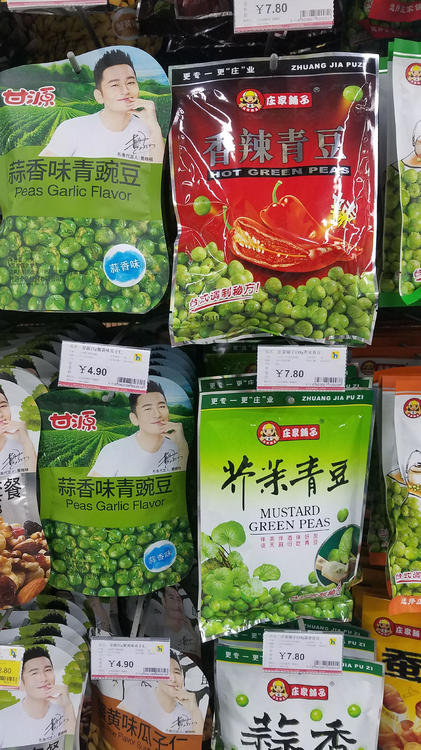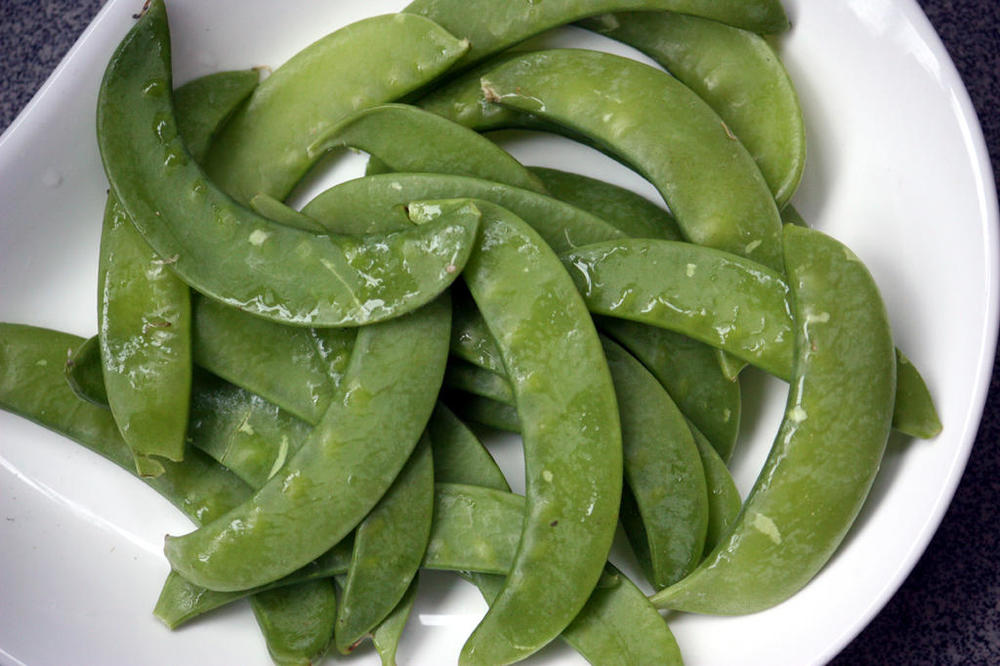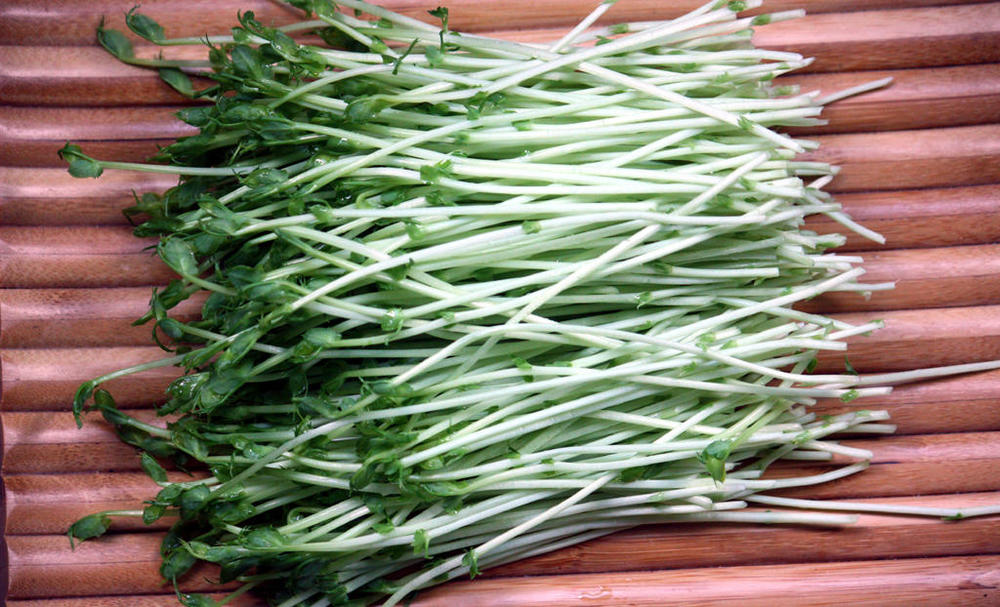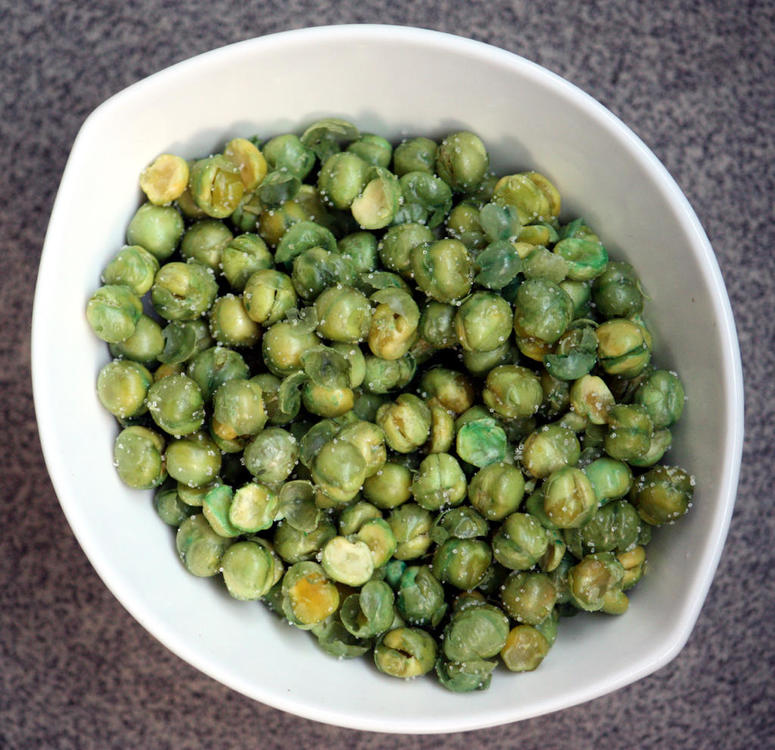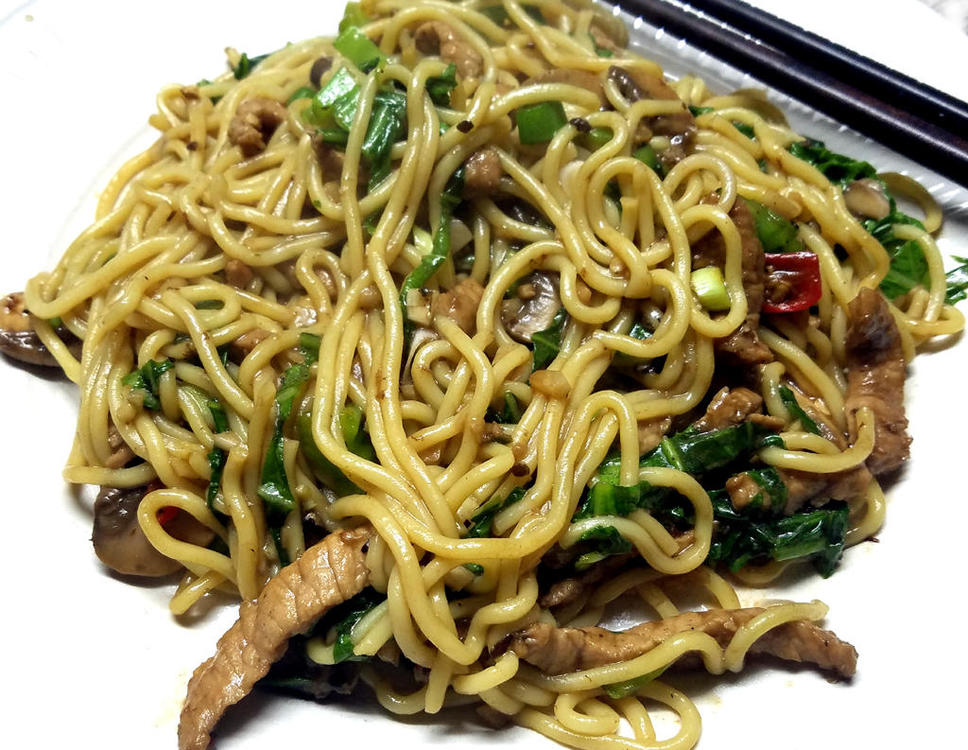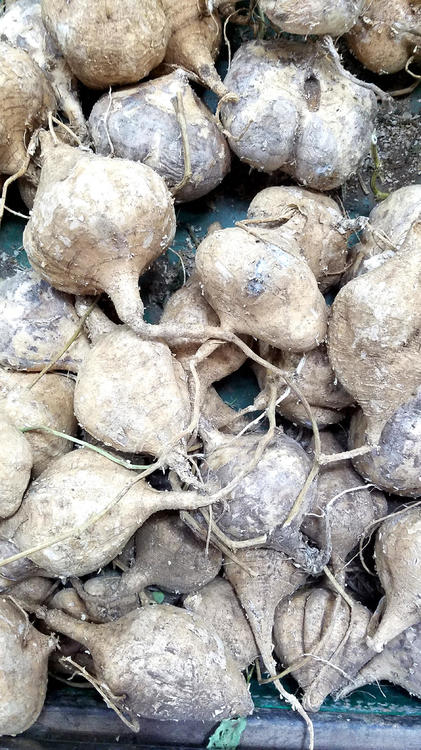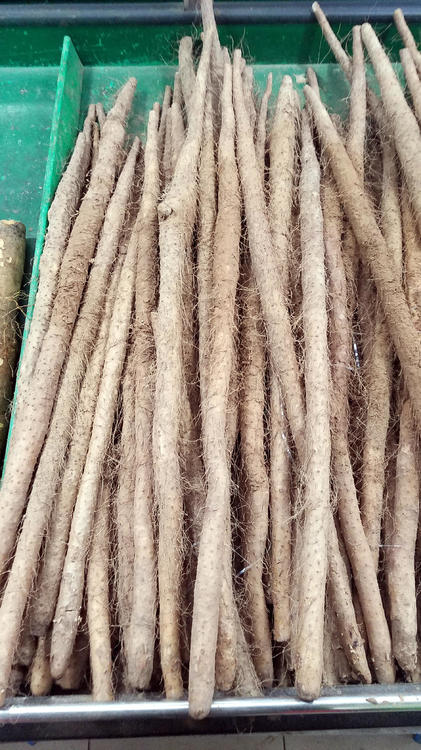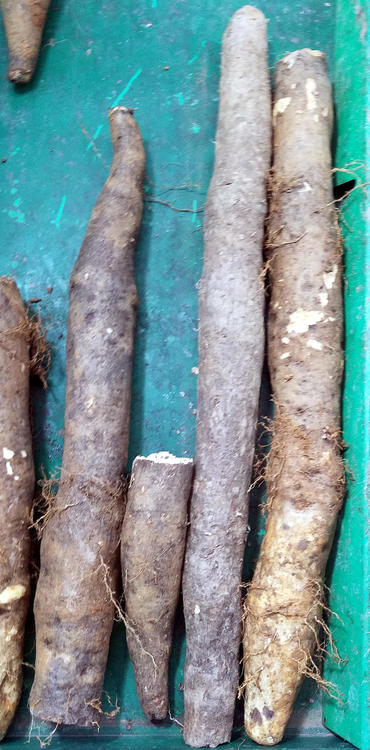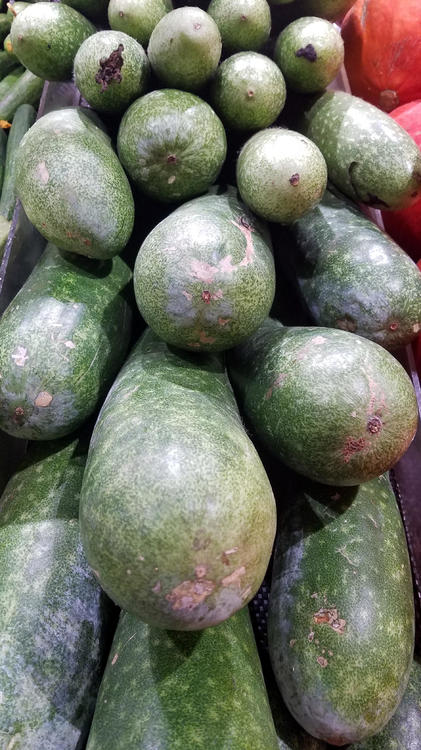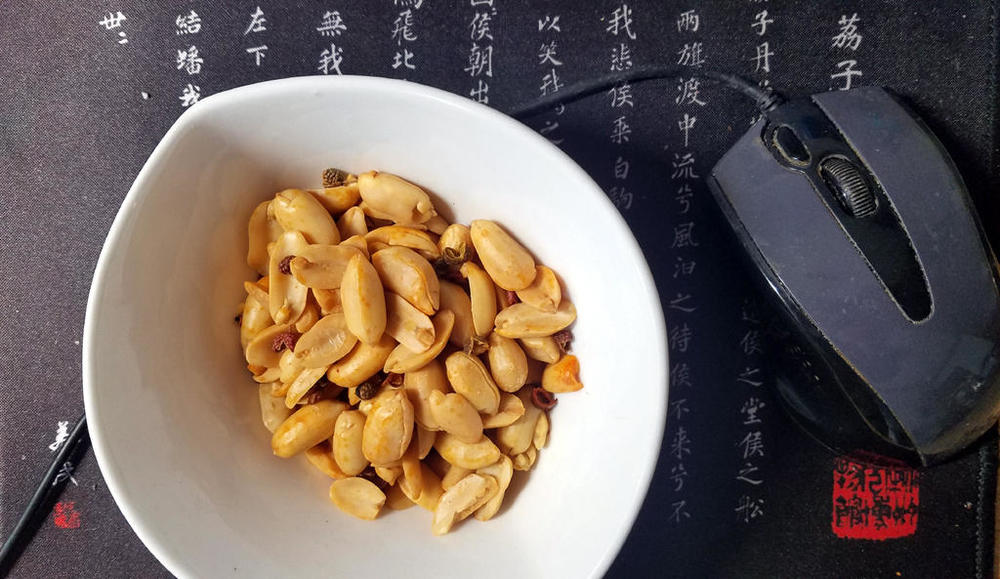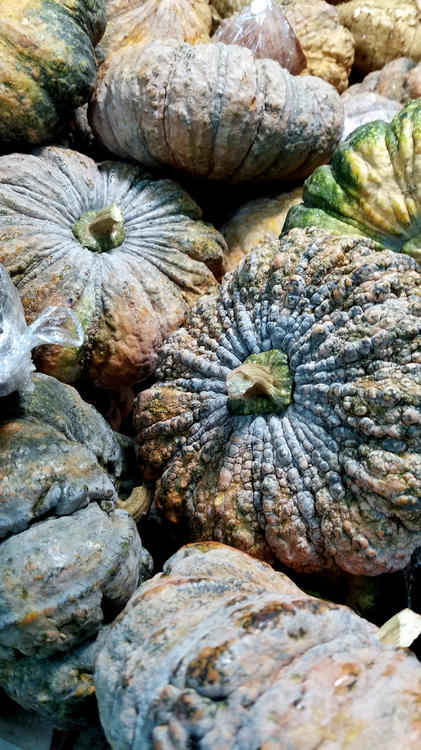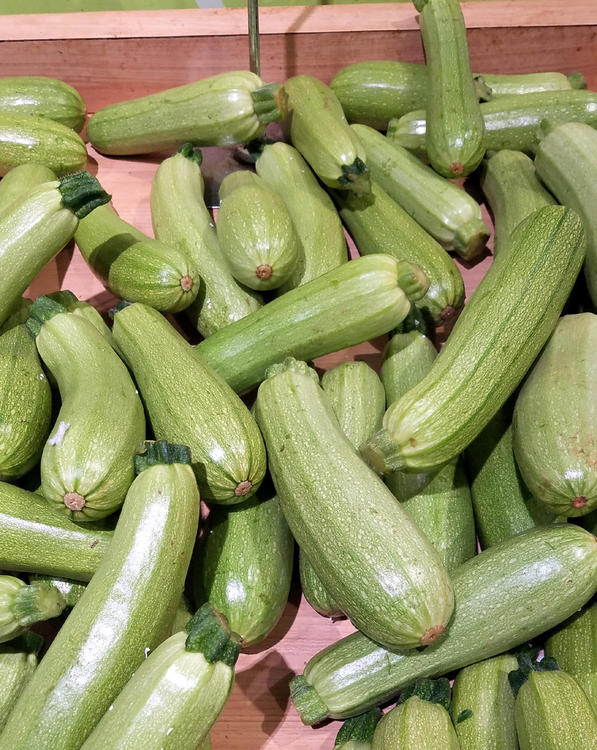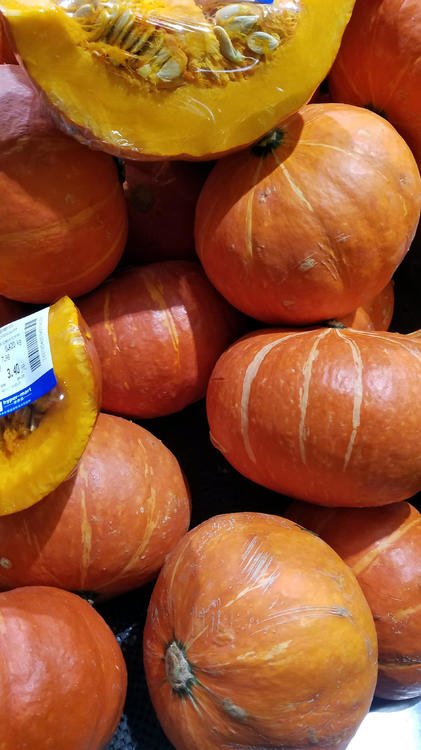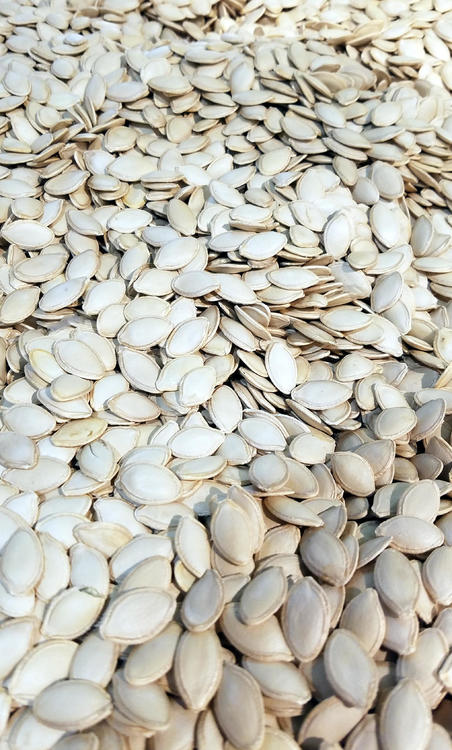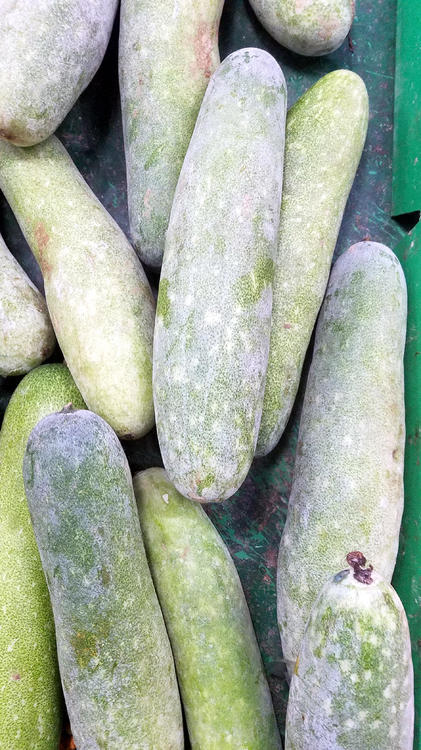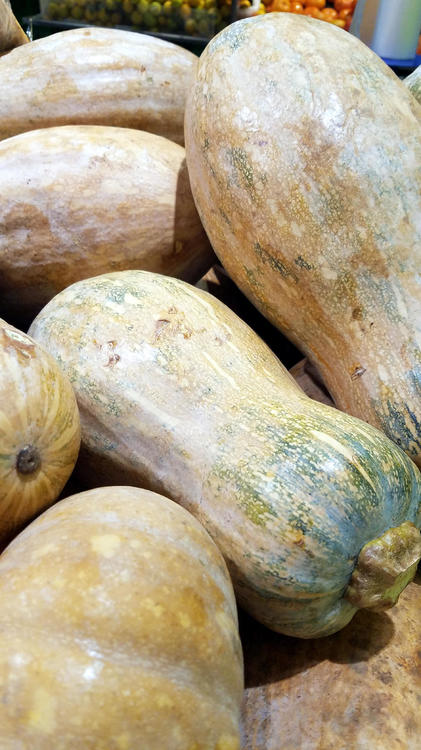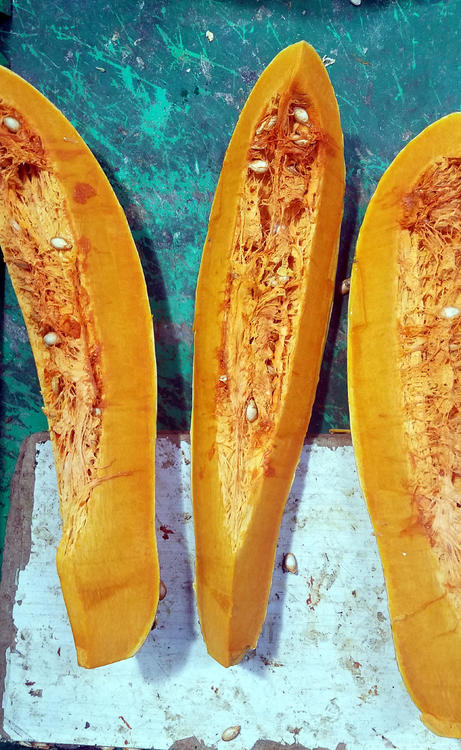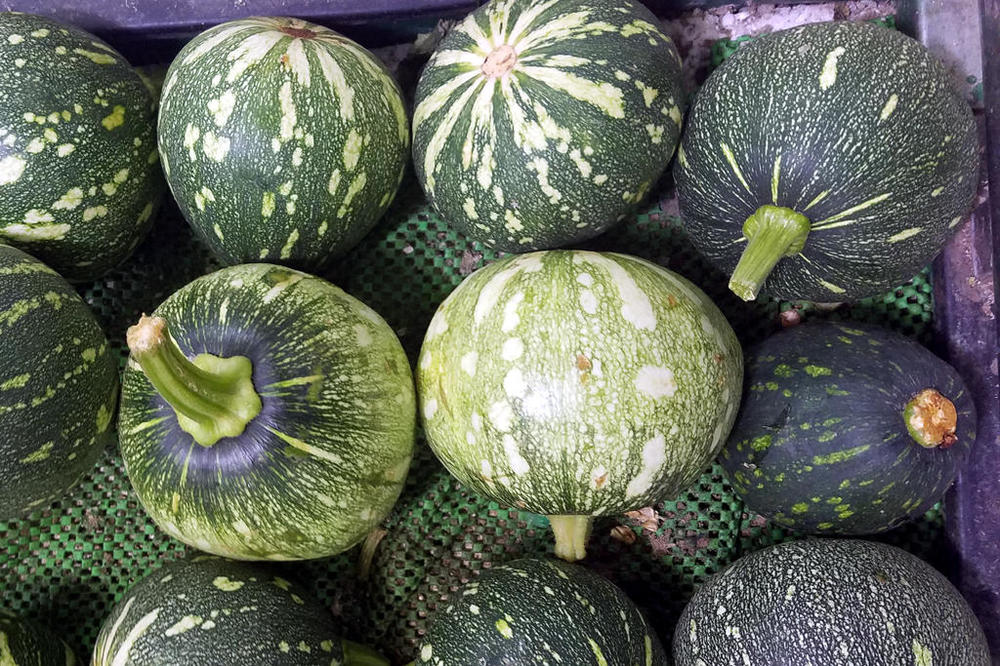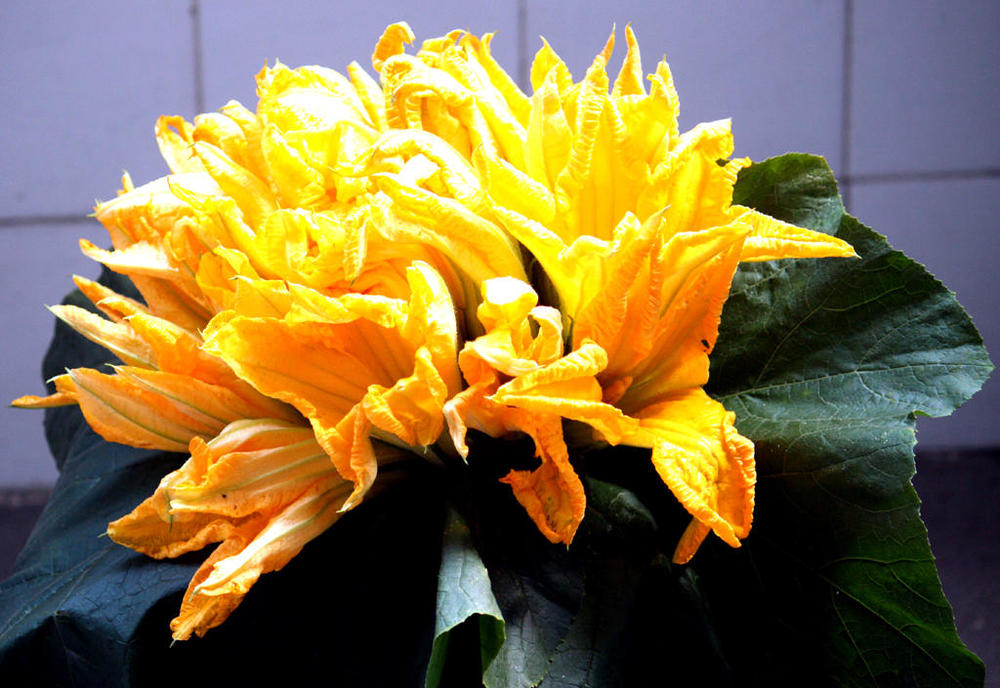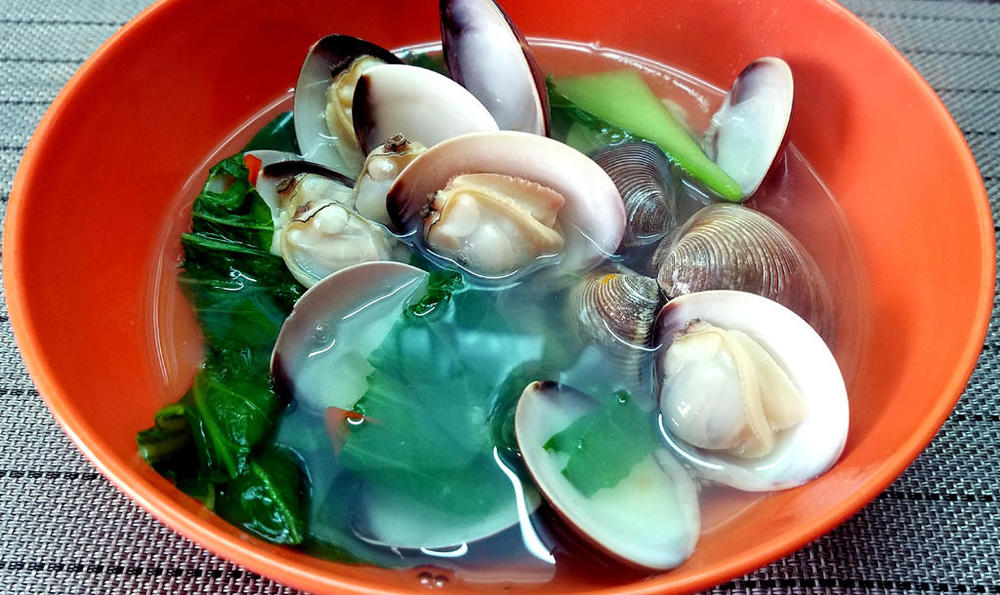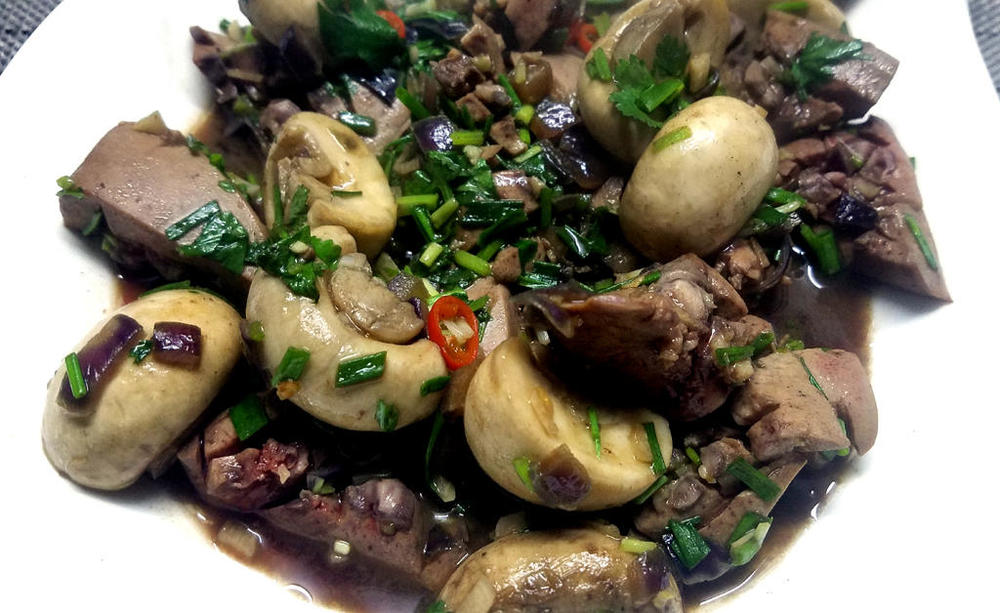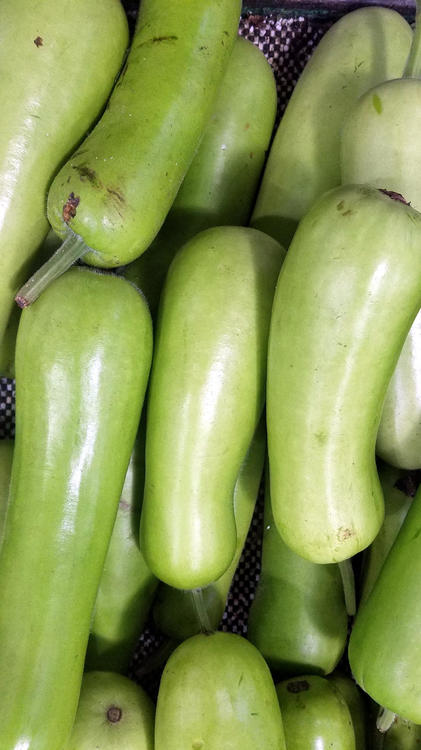-
Posts
16,714 -
Joined
-
Last visited
Content Type
Profiles
Forums
Store
Help Articles
Everything posted by liuzhou
-
I thought maybe Knorr was going into the seaweed business. Lunch today. 三鲜馄饨 (sān xiān hún tún). Three delicacy wonton soup. The delicacies being pork, shrimp and shiitake. With spinach in a home made silkie chicken broth. Not Knorr!
-
Thai red curry duck. Served with onion raita - yes, not Thai, but I had some home made yoghurt and why not? Served with wok-wilted spinach and rice.
-
I think Anna N meant nori. They look a bit like that to me, too.
-
The taste is very mild and slightly herbal, so yes, it is more valued as a textural thing. The Chinese one is related to the North American one; they are both zizania, but different sub-species, Zizania latiflora in China; Zizania palustris in North America. The reason the Chinese variety is banned in the US is because of the yeast, not the wild rice. I did mention that it was considered an invasive species in NZ.
-
Zizania latiflora I’m not sure what to call this in English. A number of resources label it as “Manchurian wild rice”, but Manchuria as a name is anathema to most Chinese as it refers to the puppet state set up by the Japanese invaders in the 1930s. The area is known to the Chinese as 东北 (literally “east-north”), so I’m going with Dongbei Wild Rice Stems. In Chinese, they go by many names, but the most common seems to be 茭笋/茭筍 (Mand: jiāo sǔn) , 茭白 (Mand: jiāo bái;) 茭白笋/茭白筍 (Mand: jiāo bái sǔn). I have been unable to find the Cantonese name in any of my dictionaries. Maybe they don't know about it. Peeled, they look a lot like bamboo shoots and have been called “water bamboo” in older English texts, but are totally unrelated to bamboo – despite the Chinese name including 笋/筍, which usually refers to bamboo shoots. Many Chinese people think they are bamboo, too. They are the stems of a wild rice plant once an important grain in China. Today the plant is virtually extinct in the wild and the grain is no longer eaten, but the stems are still cultivated as a vegetable. The stems are infected by a fungus, Ustilago esculenta, which causes them to swell into juicy tubers. These are peeled, sliced and usually stir fried, although it can be eaten raw. The vegetable retains a certain crispness when stir fried, a desirable quality in Chinese cuisine. The importation of the stems to the USA is illegal as there are fears the fungus would spread to native wild rice varieties. It is classified as an invasive species in New Zealand.
-
Me too.
-
Yes, they do, but I've only ever once seen it as a commercial product. It is possible people prefer to pickle it at home themselves, though. The Chinese pickle everything!
-
oops, I already did this one here.
-
Arctium lappa Superficially similar to the Chinese yams a couple of posts back, this is in fact a different species altogether What you are looking at is burdock root, or 牛蒡 (Mand: niú páng ; Cant: ngau4 bong2). Burdock is in the same family as sunflowers, and is related to the artichoke. Only the roots are eaten here, but I'm told the young flower stems are also edible. The roots are up to 1metre/ 3 ft 3 in) in length. These are usually sliced and stir fried, but sometimes used in hot pots. Kind of potato-y but crisp. Like almost everything, burdock is used in traditional Chinese medicine. I also remember, very clearly, drinking dandelion and burdock as a child.
-
The mind boggles.
-
Pisum sativum. Give peas a chance. Peas are grown in China but I rarely see fresh peas in their natural state in the pod, or out. On occasion, they turn up pod-free in bags in some supermarkets. I bought them once. They were so old that all the sugars had turned to starch and they were rock hard. Boiling them for hours made no difference whatsoever. Inedible. Also frozen fresh peas are unheard of. Even more occasionally, I have seen canned peas, but not very good ones. So where are all these peas going. Well, mainly into the snack market. Roasted salted and flavoured peas are widely available. I used to buy and enjoy them, but I got scared of how long my teeth would last biting into them, so I haven't had any for years. Salted dry roasted peas What we do get however as a non-snack item, but more a vegetable are pea sprouts 豌豆芽 (Mand: wān dòu yá; Cant: wun2 dau6*2 ngaa4), made just like all other bean sprouts. We also get pea greens 豌豆苗 (Mand: wān dòu miáo; Cant: wun2 dau6*2 miu4), used as is any other green vegetable. What we do get in pods are sugar snap peas, Pisum sativum var. macrocarpon. In Mandarin Chinese, 甜豆 (tián dòu), meaning 'sweet bean', but in Cantonese 蜜豆 (mat6 dau6*2), translating as 'honey bean'. These an the next example are both sometimes referred to by their French name 'mange tout', meaning 'eat all', as the pods are almost often eaten along with their content. And, snow peas, Pisum sativum var. saccharatum, 荷兰豆/荷蘭豆 (Mand: hé lán dòu; Cant: ho4 laan4*1 dau6*2) , which means 'Holland beans'. I have no idea why they think they are from Holland. These are frequently cooked with squid and other seafood. The stems and leaves are also eaten.
-
Not what I planned, but life intervened. Still, I enjoyed it. Fresh ramen noodles stir fried with pork, mushrooms, shredded mustard greens, chilli, Sichuan peppercorns, garlic, ginger, Shaoxing wine and soy sauce.
-
I'm thinking of doing a Thai-style duck curry tonight or tomorrow. I'll be using breast meat (after removing and rendering the fat, saving it separately). I've done it before and enjoyed it. I usually do curries with a mix of breast and leg, but breast is what I have today.
-
The Chinese yam vine (above) also produces bulbils where the leaves join the stem. These are also edible, if tasteless. In Chinese they are referred to variously as 山药豆/山藥豆 (Mand: shān yào dòu; Cant: saan1 joek6 dau6*2), 'yam bean' or 山药蛋/山藥蛋 (Mand: shān yào dàn; Cant: saan1 joek6 daan6), 'yam egg'. However, here in Guangxi they are usually called 凉薯 (Mand: liáng shǔ; Cant: loeng4 syu4) which literally means 'cold potatoes'. They are only very vaguely potato-like and again, more starchy. I bought and prepared them once, but never saw any reason to revisit.
-
Leaving the 'gua' family aside for a bit, I move on to Dioscorea polystachya, Chinese yam also called cinnamon-vine. This is a flowering vine native to China but now growing all over Asia. It has been introduced to the USA where it is considered an invasive species. All the more reason to eat it. In Chinese it is known by several names. The most common variety is 淮山 (Mand: huái shān ; Cant: waai4 saan1) or 山药/ (Mand: shān yào; Cant: saan1 joek6), meaning 'mountain medicine' (as it is used in traditional Chinese medicine). Occasionally, these two names are combined, giving 淮山药/ (Mand: huái shān yào; Cant: waai4 saan1 joek6). Unlike others yams, this one can be eaten raw. It is eaten so in Japan, but as I've mentioned the Chinese are particularly averse to raw foods. These sticks are about 12"/30cm long. Peeled and sliced they are used in soups and hot pots like potatoes. I find them over-starchy and tasteless, but for some reason they are popular. They are also made into a paste used for thickening soups and stews. There is a second variety, called 铁棍山药/ (Mand: tiě gùn shān yào; Cant: tit3 gwan3 saan1 joek6) 'iron rod mountain medicine'. These are considerably longer and thinner - up to two feet / 60 cm long or more. They taste the same.
-
More confusion today. 冬瓜 (Mand: dōng guā; Cant: dung1 gwaa1) directly translates as 'winter melon', but refers to what you may know as the 'wax gourd', and not what is elsewhere known as 'winter gourd'. It is also known regionally as ash gourd, white gourd, winter gourd, tallow gourd, ash pumpkin, etc Benincasa hispida These can reach up to 80 cm/32 inches in length. Used as the pumpkins in the last post. Again it is available in slices or pieces. Another variety of wax gourd that we have is 节瓜/節瓜 (Mand: jié guā; Cant: zit3 gwaa1), sometimes called 'hairy gourd'. Much smaller at only 8 to 10 inches / 20-25cm in length this is the jointed wax gourd. It is used in the same ways as its large siblings. jiegua We do get a range of what people call the winter squashes that come in many colours and shapes. I'll cover them when they turn up. It isn't winter here, yet.
-
You mean you've never heard of the Welsh cheese cake master, Ben D. Franklin? Astonishing! His leek and banana cheesecake is legendary among those in the know.
-
-
I've never seen a purple silkie. Only black. And not bruised. It would have helped if the OP had included a photo.
-
I'll be looking at winter squash tomorrow. Another one which has different meanings to different people.
-
My thoughts exactly.
-
Might be a different Ben Franklin. 😄 I don't see anything particularly unusual about the recipe, though. It's just a cheesecake. Nor is cayenne with chocolate unusual. Chilli and chocolate is a well known pairing.
-
Now I enter dangerous waters. I'm going down the pumpkin hole. There is a problem in that there is no standard definition of a pumpkin, other than it is a type of gourd. This means what I consider to be a pumpkin, you may not and the next guy will think of something different again. This applies in both English and Chinese. So, I'm going to show examples of what is known as 南瓜 (Mand: nán guā; Cant: naam4 gwaa1), which is literally 'south gourd' and usually translated as 'pumpkin'. However, again there are many types. The most common example is simply named 南瓜. These: They are around 18 inches/ 46 cm long; clearly too much for the average family in one sitting, so they are also sold in pieces. We also see these, which may more closely resemble what many of you think of as pumpkins. They are 圆南瓜/圓南瓜 (Mand: yuán nán guā; Cant: jyun 4*2 naam4 gwaa1) which means 'round pumpkin. Again, as can be seen, you can buy a whole one or just a piece. They also come in a green-skinned variety known as 青圆南瓜仔/青圓南瓜仔 (Mand: qīng yuán nán guā zǐ; Cant: cing1 jyun 4*2 naam4 gwaa1zai2), 'young green round pumpkin'. Then we have these small pumpkins known either as 小南瓜 (Mand: xiǎo nán guā; Cant: siu2 naam4 gwaa1), 'small pumpkin' or, in Mandarin only, 贝贝南瓜/ (bèi bèi nán guā), 'baby pumpkin'. Those in the photo below are around 6 to 7 inches/ 15 to 18cm long. At the opposite end to the babies are the 老南瓜 (Mand: lǎo nán guā; Cant: lou5 naam4 gwaa1), meaning "old pumpkins'. One very noticeable variety is this: These knobbly gourds are known as 丑南瓜/醜南瓜 (Mand: chǒu nán guā; Cant: cau2 naam4 gwaa1) which means 'ugly pumpkin. Don't look so ugly to me. All of these pumpkins are mainly used in soups and hot pots, although pumpkin cakes are also very popular. More popular than anything is the seeds. Chinese people love pumpkin (and sunflower seeds). I once took an 18-hour train journey and the family opposite me literally ate them for the whole journey. The seeds are also used to produce oil which is used as a condiment; not suitable for frying. This is available only a few specialist stores. The people here in Guangxi, especially in the countryside, eat the the pumpkin leaves as a green vegetable. But I have kept my favourite to last. 南瓜花 (Mand: nán guā huā; Cant: naam4 gwaa1 faa1). Pumpkin flowers are wonderful. Used mainly in light soups, but I've also had them stuffed with minced pork etc. They are also delicious battered and deep fried, tempura style.The flowering season is short, but a highlight of my year, There are other pumpkins, but the season is only beginning. I'll add any more I see, as and when they appear.
-
Clam and leaf mustard soup. Spicy pork kidney with white button mushrooms, Shaoxing wine, garlic, ginger, chilli, coriander leaf and chives. Rice.
-
Lagenaria siceraria Still at the altar of 瓜, we come across these. This is calabash, bottle gourd, white-flowered gourd, long melon, New Guinea bean or Tasmania bean. In Chinese, 葫芦(瓜)/葫蘆(瓜) (Mand: hú lú (guā); Cant: wu4 lou4*2 (gwaa1)) or 葫子(瓜) (Mand: hú zi (guā); Cant: wu4 zi2 (gwaa1)). The gua character is sometimes dropped in this type. They come in many shapes, but this is the most common round here. Like most of the vegetable gua family, these are used in soups and hot pots, but also stir fried.


